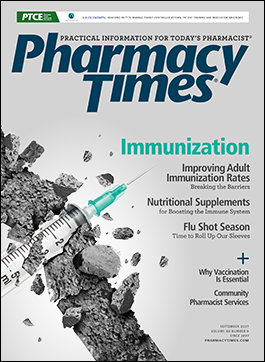Publication
Article
Pharmacy Times
If You Are a Health Professional Whose Salary Is Between $100,000 and $220,000 per Year, Watch Out: What Can Pharmacy Learn From Trends in Primary Care Employment?
Over the past decade, physician employment has skyrocketed, with small-business primary care clinics being gobbled up at staggering rates by large corporations.
NOT MY FATHER’S FAMILY MEDICINE CLINIC
I was traveling through an airport back home recently and came across a display of local travel guides that advertised resorts across popular areas of the state, so I grabbed all 5 to read during my flight on a very small plane with no Wi-Fi. About halfway through the third guide, I came across an advertisement for a clinic with the headline, “We Are Your Home for Family Medicine.” Six portraits were superimposed on the half-page ad, and something immediately caught my eye: only 1 of the 6 providers in the clinic was a family physician; the others were nurse practitioners and physician assistants.
This raised my eyebrows as I recalled a conversation I had a month prior in a northeastern state, where a local pharmacy owner told me, “There is a clinic across the street staffed with nurse practitioners and a single physician. I never see prescriptions from that physician, and I’m not sure he’s ever even there.”
ARE TODAY’S “PROVIDERS” COMPOSED OF PRACTICING PHYSICIANS, PHARMACISTS, NURSE PRACTITIONERS, PHYSICIAN ASSISTANTS, AND PHYSICAL THERAPISTS? OR ARE THEY CORPORATIONS?
What struck me as most important about that advertisement was the economics of it. I’m not at all intending to opine here about the merits of nurse practitioners or physician assistants leading a practice. Rather, I’m wondering aloud about the trends and market pressures that may end up supplanting primary care physicians’ manner of practice and livelihood. One of the often-discussed topics outside of our pharmacy bubble is the rapid increase in consolidation by health systems. Retail pharmacy went through a similar phase in the 1990s and early 2000s.
Over the past decade, physician employment (vs private practice) has skyrocketed, with small-business primary care clinics being gobbled up at staggering rates by large corporations. Hundreds of health systems with tens of thousands of physicians have been assimilated and now operate as interchangeable parts. Similar to the world of pharmacy, the physician “provider” has become the “building” and the “brand,” rather than the practitioner.
Somewhere in each of those corporate suites are spreadsheets that itemize revenues and costs. When physicians are employed, they fall into both the billing revenues and the labor cost columns. According to a 2016 physician compensation report, the average annual compensation was $222,000 for internal medicine physicians; $207,000 for family medicine physicians; and $202,000 for pediatricians, essentially half the salary of the average orthopedic physician (ie, $443,000).1
Why the discrepancy? Market realities, mostly. Orthopedics, cardiology, dermatology, and the like bring in large revenues to the health system for employed physicians. They also bring in large revenues when not employed, but affiliated, because they use health-system facilities and are associated with lots of tests and surgeries, both of which generate healthy revenues for the health system.
Primary care now admits fewer patients, performs fewer procedures, and writes far less expensive 340B medications than do specialists. Most health systems lose money on primary care providers, which act as a “loss-lead,” using the primary care appeal to bring patients into the building, brand, and system.
WELCOME TO THE PARTY: THE HEALTH CARE SECTOR IS FINALLY EXPERIENCING DOWNWARD PRESSURE ON UNIT COST
Every sector of our economy, except health care, has steadily driven down costs while expanding services to create value over time. Payment reform is inevitable. Between the rise of consumerism and price sensitivity through high-deductible plans and payers throwing up their hands and saying to providers, “OK, you take on some or all the risk,” the way which we pay for health care as a country will change rapidly. To date, the dominant model has been fee-for-service (and fee-for-product, in the case of pharmacies). In this model, more doing equals more revenue, and as long as the margin on the service is sufficient to satisfy practice owners and personnel, everyone is happy.
But what happens when providers take on part of the risk associated with expenditures? All of a sudden, the provider discourages it and is heavily motivated to reduce units and unit cost (of visit, procedure, or medication) if they are risk-exposed to it.
AT A CROSSROADS: IS IT BETTER TO HOLLOW OUT IN THE MIDDLE OR INVEST IN IT?
There are 2 general strategies when deciding how to respond to these emerging cost pressures: (1) limit access and reduce costs in the short run, but with a potential long-run loss to taxpayers, employers, and patients with health needs or (2) invest heavily in preventive care to reduce long-run costs. Unfortunately, we have a system of insurance that operates in 1-year benefit cycles, making the latter strategy difficult to justify for most providers because the gains on prevention are often realized by another entity in a future state after the benefit and performance cycle is complete.
Thus, the emerging strategy is to find lower-cost general practitioners at the base of the salary pyramid and rapidly expand that base to meet the burgeoning need for generalists (primary care) while holding steady on specialists, aggregating them in city centers, and removing them from outlying parts of the medical trading area.
In a recent survey of thousands of physicians across 25 specialties, family medicine and internal medicine were the 2 cohorts most likely to respond favorably to the question “Would you choose medicine again as a career?” However, when asked if they would choose the same specialty, the same 2 cohorts were least likely to say yes. One can only wonder if the assault on the autonomy and independence of physician-led primary care over the past decade is to blame.
WHAT DOES THIS ALL MEAN FOR PHARMACISTS?
Most pharmacists have salaries on the lower end of that $100,000 to $220,000 range that generalist physicians find themselves in. This salary range is a red flag to corporate accountants. Mail order pharmacies, increased technician roles, mail order pharmacotherapy call center combo shops, and telepharmacy vendors not connected to the dispensing pharmacy are all means by which to reduce or eliminate pharmacist labor costs as downward pressures on reimbursement get stronger each year.
GET ON THE PATIENT OUTCOMES TRAIN OR GET LEFT BEHIND
The only countervailing force against this trend is a system that embraces value based on achieving patient outcomes. Dispensing pharmacists are in the unique position of having a touch point with the patient nearly every month, often face-to-face. Much like primary care providers, these pharmacists are generalists who are positioned well to coach, monitor, follow up, and be held accountable for achieving clinical end points and patient outcomes.
Generalists making between $100,000 and $220,000 have the burden of proving their value through drops in glycated hemoglobin levels, blood pressure, hospitalizations, and, ultimately, total cost of care in a risk—reward payment model if they are to sustain themselves in the era of the bean counter. Absent that, there are plenty of low-cost providers who would be happy to take their place.
Troy Trygstad, PharmD, PhD, MBA, is vice president of pharmacy programs for Community Care of North Carolina, which works collaboratively with more than 1800 medical practices to serve more than 1.6 million Medicaid, Medicare, commercially insured, and uninsured patients. He received his PharmD and MBA degrees from Drake University and a PhD in pharmaceutical outcomes and policy from the University of North Carolina. He also serves on the board of directors for the American Pharmacists Association Foundation and the Pharmacy Quality Alliance.
References
- Peckham C. Medscape physician compensation report 2016. Medscape. http://www.medscape.com/features/slideshow/compensation/2016/public/overview? .src=wnl_physrep_160401_mscpedit&uac=232148CZ&impID=1045700&faf=1. Published April 1, 2016. Accessed August 25, 2017.
- Nurse practitioner salaries. Salary.com website. http://www1.salary.com/Nurse-Practitioner-Salary.html. Accessed August 25, 2017.
- Physician assistant - medical salaries. Salary.com website. http://www1.salary.com/Physician-Assistant-Medical-Salary.html. Accessed August 25, 2017.
- Pharmacist salaries. Salary.com website. http://www1.salary.com/Pharmacist-Salary.html. Accessed August 25, 2017.

Newsletter
Stay informed on drug updates, treatment guidelines, and pharmacy practice trends—subscribe to Pharmacy Times for weekly clinical insights.






